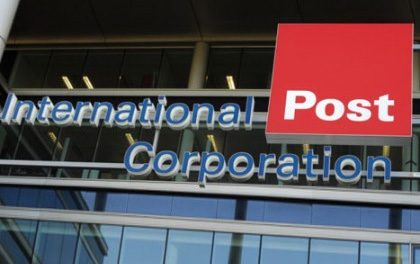
Carriers keep pushing the envelope
Business-to-consumer deliveries may be tricky, but express carriers are getting smarter at handling them effectively, and are streamlining their B2B service as they do so. Marcia MacLeod reports
In a growing, supposedly dynamic industry, one would expect rapid change and constant innovation. All the more damning for the parcels sector, then, when one of its leaders, Jonathan Smith, managing director of Amtrak, says: "I came back to the industry last August after four years away – to find not much has changed."
As far as he's concerned, developments in technology haven't had much effect, either. "Track and trace improvements are only more sophisticated versions of the same," he adds. "There's nothing new when it comes to communication in the cab; automated sortation is common. IT has improved productivity, but not changed the way we do business.
"Besides," he points out, "the major judgement on a parcel company is on its physical ability to move parcels. Everything else is secondary."
And, four years on, the carriers are still trying to work out how to best cross that last mile.
Some have realised that home delivery cannot be done at rock bottom prices; the general rate for delivering a business-to-consumer parcel is now £3.50 to £4.00, instead of the £2.00 charged a couple of years ago. And when Parcelforce pulled out of the "general" (three- to five-day delivery) market last summer, it left a lot of the retailers who sell low-margin products without a carrier.
"The non-guaranteed market – the one offering three- to five-day delivery, no signature and limited tracking – is declining," said a Royal Mail spokesman. "It's a huge drain on resources. We needed to improve our quality of service."
The result was a reduction in depots and capacity from 120 million parcels per year to just 40 million, and a cut in headcount of over 50 per cent. In exchange, however, Royal Mail increased its parcel post weight limit from one kg to two. At the same time, new Parcelforce contracts were "re-negotiated", usually at a higher rate.
Meanwhile Parcelforce has focused on developing alternative delivery options, such as its locker bank trial in Nottingham and the Web-based "preferred alternative" service, in which consumers can register their choice of alternative delivery address (neighbour, locker, post office) in case they are not at home. Consumer response has been "incredibly positive", says John Wilkins, head of delivery products. "Over 75 per cent out of 200 users surveyed said service was significantly better."
Whether Parcelforce returns to evening and weekend deliveries – trialled but abandoned – depends partly on retailers. "We know consumers want evening and weekend delivery, but not enough retailers are prepared to offer it," Wilkins claims.
Amtrak "is pushing evening deliveries hard," according to Jonathan Smith. "We've been trialling evening deliveries until 9 pm within the M25 for six months; there's been a good response from consignor and consignee. The trial will be extended to eight or nine cities over the next three months, including Manchester, Birmingham, Glasgow and Bristol. We already offer Saturday morning deliveries."
Amtrak always shied away from the standard B2C service, only offering next-day delivery. "The problem with B2C is people aren't expecting things to turn up," Smith points out. "We work with customers to see how orders are processed, how they communicate with the consumer. Once we're satisfied people know things are coming, we'll deliver."
Lynx is another carrier that limits B2C deliveries to pre-arranged drops, often for products such as mobile phones or laptops. Saturday and Sunday deliveries are common; some evening drops are also made. "We only go for the high end of the market," emphasises chief executive David Burtenshaw. "When Parcelforce cut its capacity, it benefited some customers, but not us as we didn't want the business it dropped."
And while Lynx offers drop boxes for field engineers to receive parts (it will also deliver overnight to engineers' cars), it does not think this is an acceptable solution for home shoppers. Instead, it is about to trial an agency delivery solution with one of its customers, French catalogue company RedCats. Beginning after Easter in Coventry, Leeds, Swansea and Reading, Lynx will drop off any B2C items – for RedCats or not – to RedCats' existing agents, who will then complete last mile delivery.
"We tested the agent concept 18 months ago in the Midlands and learned a lot of lessons," says Tim Smith, director of Lynx Solutions, its new B2B and B2C logistics service. "We've also worked with RedCats to set up an agency system for their own products. It makes sense to expand their product to other goods."
It also gives Lynx an entry into the mass market home delivery sector, which it wouldn't touch before because of last mile problems. Burtenshaw stresses, however that Lynx still wants to carry the quality end of the mass market. "RedCat agents provide a high level of service; we want to work with a high level of customer, although we expect to be competitively priced."
Initial Citylink, which only delivers B2C "because B2B customers such as the mobile phone industry move that market," offers a nominated-time delivery, with a half-hour leeway either way. For example, an arranged 3.00pm delivery could be dropped between 2.30 and 3.30. It also launched a next pm service in September to complement its next am product.
B2B operations usually feature some pretty well-established delivery options, but even here some companies have new offerings. UPS, for example, has developed a returns service under its WorldShip brand. Launched in January, it offers Return Service (RS) 1, in which one attempt is made to collect a return from a customer, or RS3, in which three collection attempts can be made. Customers can also email their customer a tracking label, or put it in the outbound box; the end customer then calls UPS to arrange collection.
DHL, which like UPS is primarily a B2B carrier that does some home deliveries, has improved its service in a number of ways. It has expanded its strategic parts centres, which deliver parts to field engineers within two to four hours, to over 100 locations across Europe, and it has introduced a temperature-controlled service using coolant packs or dry ice to maintain a plus 2 deg to plus 8 deg or minus 20 deg temperature. This service has been taken up mainly by pharmaceutical companies, but DHL sees tremendous potential for food and other sectors.
Securicor Omega is adding an economy service for B2B customers, using National Express coaches to deliver nationwide. Although still a 24-hour service, it does not include a timed delivery, and will be charged at approximately half the current rate.
As well as operational developments, most express companies are investing in new technology, both for drivers and in the depot. Many companies, including Parcelforce and FedEx, are upgrading drivers' handheld devices to GPRS to provide real-time delivery data, as well as allow drivers to collect digital signatures or receive collection/delivery instructions.
The latest version of UPS's handheld system, DIAD III, also integrates GPRS to provide greater functionality and more real-time information. Geopost is giving Parceline drivers new devices embedded with GSM capability to capture digital signatures and so on. Interlink, Geopost's B2B company, only has barcode scanners.
Others such as Lynx have gone for imaging technology, both in-cab and in the depot. Drivers can take a picture of a hard copy signature to send back to base – and could, if desired, even take a snap of the front door of the delivery address, which is time- and date-stamped by the system to prove attempted delivery.
DHL is trying to improve the speed of scanning in the warehouse by barcoding bags and containers. When a bag's label is scanned, it identifies every item in the bag; when a container is scanned, it identifies every bag – and its contents. Both DHL and TNT also now provide track and trace per serial or other customer reference, rather than just order or airwaybill number.
But many e-tailers and manufacturers now don't want full track and trace because it contributes to information overload. Instead, they want exception reporting or alerts – something provided by Initial Citylink with its MailTrack, and FedEx with Insight.
Customer-facing technology is being improved further by either allowing customers to integrate with their courier company, or by embedding courier software in ERP packages. Lynx has developed software allowing small businesses to access its system over the Web for booking collections, printing labels and so on. Geopost's ExpressIT gives similar functionality to Interlink customers with up to 25 parcels a night.
TNT's Express software also produces barcode labels and other paperwork; and it has now launched Express Manager to provide smaller businesses with a PC as well. And UPS has embedded some of its software into SAP so customers can squirt information from back office to UPS and vice versa.
Technology is often hailed as the most important aspect of e-fulfilment, and technological developments such as these can indeed make e-tailers' – and their couriers' – lives easier. But whatever miracles IT seems to perform, we must never forget, as Jonathan Smith of Amtrak says, that technology does not deliver parcels: someone still has to finish that last mile.













